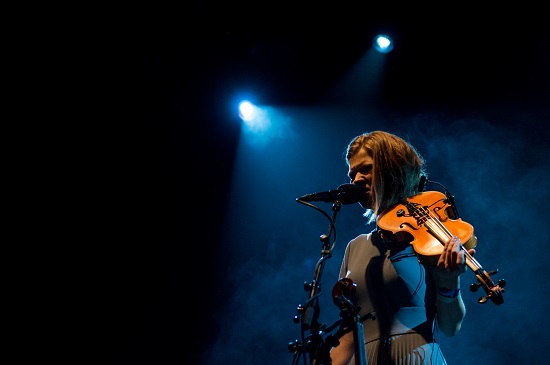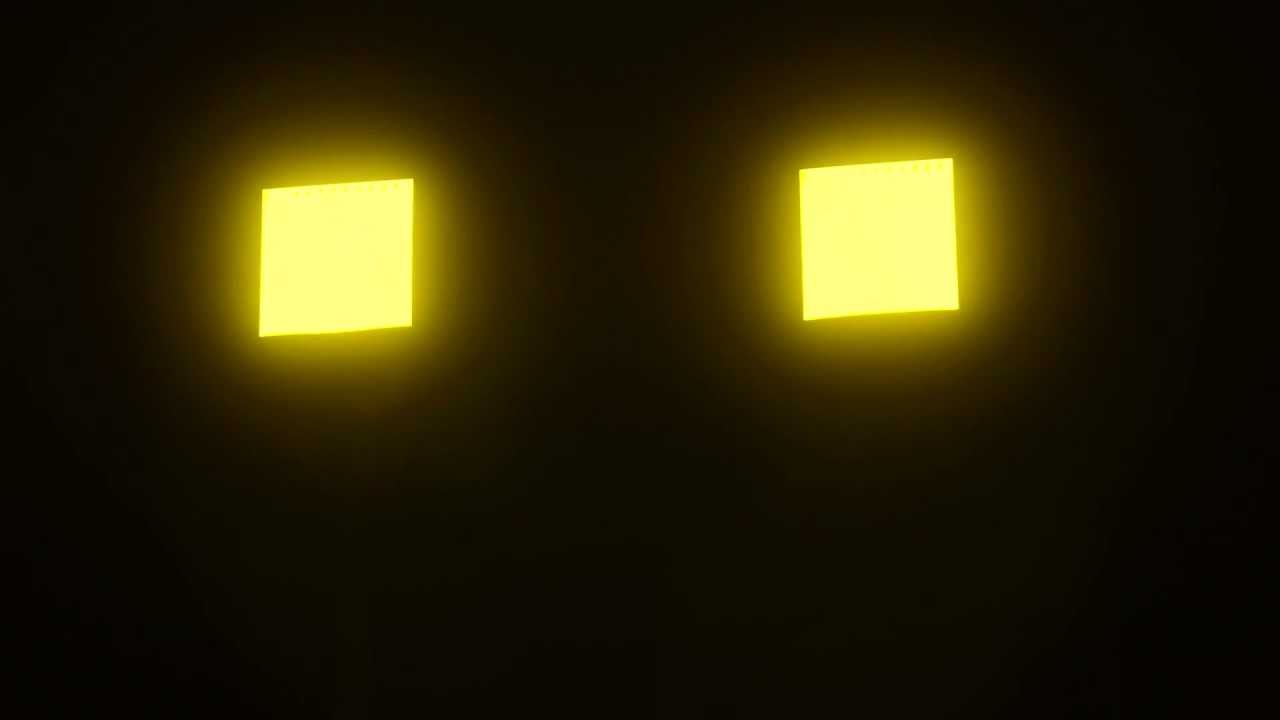Charm, Musical Mash-Ups And Geo-Politic by Richard Foster
It’s the Friday of Tallinn Music Week; Earthdate April 1, 2016. It’s late. I’m stood at the bar in the raucous city centre club ‘Sinilind’, chatting about all things music to my friend and font of music knowledge, John Robb from The Membranes. We are standing next to a small stage where the excellent Estonian folk-pop band Sädelev Kass (Shiny Cat) are playing an energetic set. The lad behind the counter hears our accents and asks where we are from. London? No. Like Withnail, we’re not from London. “Near Manchester, mate.” It’s much easier to say Manchester than Accrington or Fleetwood. “Manchester? Cool! You should try this beer.” I get “this” beer to see why.
The label states, ‘The Taste of Manchester’. The blurb on the back is in Estonian, but I will hazard a guess and say it probably eulogises (in some PR style not of anyone’s choice) a vibrant and proud post-industrial city rebuilt through the means of music, various club scenes, football and urban regeneration. With music acting as the midwife. This sets me thinking. Is this the reputation a city and its musical heritage really wants? To have its essence morphed into a brand and be subject to the strange laws of product placement? I’m pretty sure that’s not what they really want. Both Manchester and Tallinn are special cities. And this kind of reputation-bolstering feels threadbare (especially when seen on the label of a beer bottle) and more pertinently, from another era.
Luckily Tallinn Music Week has a canniness that will find a way to keep one step of the advertising goblins and their methods. The festival’s savviness and attention to surprising, unlooked for details (that in turn make you feel something good is happening) are evident everywhere. It is evident in the glorious venues, though this is an easy win given the city is a hotchpotch of geographical, historical and architectural influences, and boasts an actual seaside. It is evident in some smart events programming and production (apart from one annoying sound issue, but more of that later). It is – and here I must draw breath – evident in the pop-up cafes and “foodie/ vinyl/ sourced/ fetish-product” junkets going on in the city centre; which for once don’t make me want to scream at the thought of clueless dunderhead elites making trends out of things like offal or George Formby. In Tallinn, I notice that my recurring, pressing desire to shave ALL young lads who look like Albert, King of the Belgians is absent. The panels are actually really enjoyable and thought provoking, and don’t make me want to – in the words of Philip Larkin – “writhe around with boredom”. Even the bloody festival tote bag is of a remarkable, reuseable, attractive quality, and I will reuse it.
Why is this? Well, I think what Tallinn Music Week has in abundance is charm. Charm is its lifeblood. Geo-politics play a stronger role here than in the Western European festival “circuit”. And the organisers know this should be their guiding force. It feels like this festival has launched a soft power offensive, to both shore up and define a new identity for the region, and break down traditional music and cultural structures; using a winning nature and new ways of communicating and cooperating. The festival gently exploits our latent cultural snobbery, our “Western” notions of “The Other” for its own ends. It drives ideas of change using tropes and events based round issues that many sensitive types hold dear like ‘preserving traditions’, or ‘authenticity’. It seeks to flatter in the nicest of ways. Tallinn is full of people brought in locally and from around the globe, invited to talk about TMW’s agenda; from incredibly clever policy wonks from UNHCR, trendsetters for major brands, deejaying (Estonian) presidents, representatives of international cultural organisations, sound artists and broadcasters, high-powered bookers, creative types who are in love with the country… and even journalists like me. And the odd Sex Pistol, for good measure.
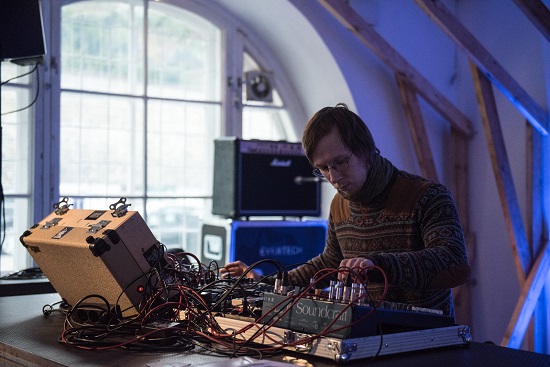
All About The Musicke
The whole exercise would be a busted flush, however, if the music was shit. And maybe this is the most remarkable thing about this year’s festival. There are around 250 acts playing, with the vast majority coming from the Baltic, and post-Soviet lands like Belarus. There’s a lot of folk and metal on show. Now, being stuck in the Baltic and surrounded by prissy folk acts and bad metal could be a very bad thing. But thankfully, most of the music I encounter is really, really good; some of it revelatory. The country had a remarkable rock and punk scene in the late 1970s and early 1980s, and that scene seems to have been just one manifestation of a longer tradition. Some people have been so drawn in by what Estonia has to offer musically that they’ve become actively involved locally. One is Dave Howell from Fat Cat, who runs the imprint 130701. Howell was turned on to Estonia’s “deep medieval roots and interesting song-forms […] by a guy called Kago, whose tracks we put up on our demo site 12 years ago. He mixes traditional Seto singing with lo-fi electronics and some slightly acid, Syd Barrett-esque playfulness.” Howell’s list of names to check was a long one: Mari Kalkin, Anne Maasik, Utsiotso, Spice Mouse, Iduvigik, Henri Laks, Mirjam Tally, Maarja Nuut, Eeter and “a ton of old wax cylinder recordings from the turn of the 20th Century.”
A remark by one of the organisers stuck in my mind too. “We are not an especially religious country, but we are a very spiritual one.” I have no way of knowing whether the average Estonian’s religiosity is trumped by their spirituality. But I do know from what I heard that there are strong atavistic, animist currents in the country’s music. And the trait of using old and new sound forms with what must feel like an omnipresent natural world is shot through Estonian modern-classical and folk like a silver thread. Sets by lively, empathic folk artist Tuulikki Bartosik, the lunatic, sinister toytronica of Grateful Däd, and the wonderful, sweeping “Mahlerian” melodies conjured up by electronic noise artist Henri Hütt nodded to unseen natural forces in their own unique ways.
When Baltic and Western “rock” traditions collided, it was interesting to stand back and suck it all in. The Membranes were at the festival to follow up last year’s triumphant gig with Estonian chamber choir Sireen with a repeat performance of their classic LP, Dark Matter Dark Energy. The only downer of the whole weekend was the sound at the cavernous future-past space of Kultuurikatel; where the front of house seemed to have preset their levels and gone off for a cuppa leaving both Membranes and choir to sort it out on stage. Everything was far too quiet, and messy and ill defined, all at once. Still The Membranes are a smart band, troopers who are able to chart through the sonic clutter, and cut away the foibles of others. And the choir were just good at being weird and adding a sort of shy, Estonian joie de vivre. Faces painted, shimmying to the sensual howls and growls of The Membranes, the choir dropped unbelievably sharp vocal snippets into the tracks, fifty sirens interjecting the most beautiful counterpoint to the band’s metal muscle. The gig was actually really great for all the wrong reasons; but this reviewer revelled in the musicians’ skills and nous in getting out of jail over and over again in front of a packed hall who, (with a few exceptions), were happy to let them off. There was a marvellous, unintentional passage during ‘Graveyard’ where the choir’s and band’s monitors “mated” in real time; creating a loop that swirled around the stage in mystifying eddies, like a sea fret. Drummer Rob Dickens decided to set up an on-the-one beat that created a massive, dubby aftershock. It started to sound like the space dust drumming on Funkadelic’s first record. The choir clicked onto this and dropped weird shimmering reveries over the top. Despite the band’s visible bemusement it worked brilliantly. The inspiration for a new record? Hope so.
Even the “International-sounding” Estonian acts (sorry, sorry, there will be no more “Other”-style ballocks from me) had strong traces of black Baltic ichor running through their musical veins. E-Orkester somehow managed to morph classical and incidental, easy listening music without turning a hair, and without sounding at all smug or self-conscious. They threw in a gently eccentric take on Kraftwerk’s ‘The Model’ for good measure, too. The unassuming glitch wizard [sic!] Ekke was so good we saw him three times. Once at Mustpeade Maja where his trippy sounds bounced off the walls like laser beams, once in the tiny and amazing MIM studio amongst some supremely horizontal hippy students and some insanely psychedelic backdrops, and one marvellous show in the afternoon at the Interior Architecture Department of the Estonian Academy of Arts.
This latter gig was full of the Beautiful and the Dutiful drifting around looking at maquettes and incomprehensible architecture videos – and potent Lithuanian booze. The students had set up a pine installation in the building too, so hanging out there smelt like a sauna hut. Maybe it was the smell of the cut pine, or the fact that my mind had slipped into the tank of alcohol prepared for it, but Ekke’s sound, a muscular and weirder, more discombobulated take on Ulrich Schnauss, dissolved into the afternoon’s sun; with shards of bass fuzz and boom slowly melting the walls.
Other things of note in a similar vein was he fabulously dusty “trad” trip hop set from Kerttu during the hip hop showcase. Kerttu’s sound had something that spoke of other spaces, however hard she tried to be “street” and conjure up the ghost of DJ Shadow. And – dig this – some classic Groundhogs/Sabs space-stoner blues from the scarily young trio Three Leg Dog and the stoner sludge that Estoner (what a name) spewed out, felt “somewhere else” too. Both bands were more than happy to commune with the troglodytes and Leshys in splendid isolation and at extreme volume, not bothered about projecting a new (marketable) version of a “classic” band. Praise be.
These acts really stood out as having the musical strength and confidence to cut a new way through the creative scrub. Maybe we should focus on a couple more, starting with Eeter. An all-woman folk-electro three piece who have backgrounds in different projects and different musical traditions, Eeter (Ether) could be something really special. We caught them in the vaulted cellar of the fine old Mustpeade Maja building on the Friday. Initially we didn’t expect much, young preppy Mac operators being very much the C21st take on 80s Goths huddling round the local war memorial. But our doubts evaporated pretty quickly due to the utter confidence they showed in their muse. Two girls drove the melody by indulging in some wildcat singing and whistling, and also making a bunch of “ethereal sounds”. The third held court at the controls of a Mac; charting a course through electronic oceans of grey, beatless wastes that sometimes sounded like the inside of a scanner. On a superficial level they share a similar sound to that of Klara Lewis; both acts play around with the scree and slurry of electronic noise, dissolving previously intractable elements into a new inspiring sound-forms. Eeter, though, draw a lot on folk traditions.On the night, the two vocalists turned into harpies, you could describe their parts as vocal interjections, as cut ups, as teases, or stuff Oliver Postgate would have though was too far out for 3 year olds. The sound clattered around the stone pillars, leaving the audience to get slightly out of their bonces. Later we saw two of the Eeter girls leading an impromptu a capella folk circle in the foyer. They’ve played just a handful of gigs, and as a live act sound like little else around.
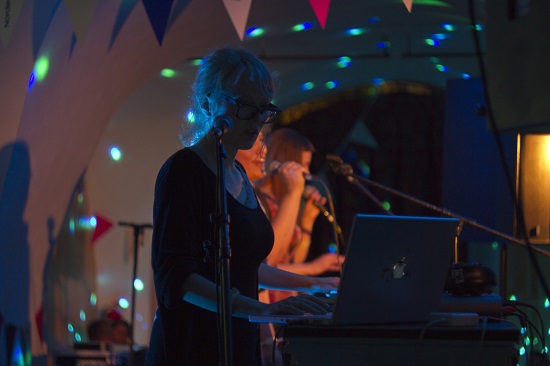
It would be churlish to miss out on reporting, or raving about, what a phenomenal artist Maarja Nuut is. Already something of a rising star here Maarja Nuut’s music seems to carry a lot of hopes with it; we noted the Estonian president squeezed into the packed vaults of Mustpeade Maja. We hoped that this isn’t going to be some terribly polite showcase, because there is something gritty and hard in her music that could easily sit alongside old Dream Academy recordings. Luckily Nuut just got on what she’s good at, with no unnecessary yacking (apart from telling us a story about a stupid crow and a horse). Her music is totally, utterly trippy; built up by strikingly simple fiddle runs with gossamer-soft counterpoints, that create dizzying song swirls. Direct yet totally tessellate; sounds from the back of beyond that threaten to trip you over the edge. At one point Nuut seemed to physically embody her music, skipping round and round in a circle, building up a rhythm with her stomps and clumps. There’s a touristy pub in Tallinn centre called Hell Hunt that boasts a painting above the door showing a naked girl, eyes shut and smiling, riding on the back of a grinning wolf. That’s what her music sounds like.
All good things come to an end. Sat in the lounge of “Europe’s cosiest airport” (that’s how they market it; yet more understated charm on show) I browse through the festival booklet’s keynote speech, written by festival director Helen Sildna, for more clues, maybe for one last hit. Maybe I had too much fun in another place; my sense of the great music driven by my surroundings, by context, by some genuinely inspiring people and about experiencing too much of the moment. And listening to some of the aforementioned artists via a stream won’t do anything for you at all. Maybe I have magnified my own reactions to a ridiculous degree, over reflecting on a clever and well thought out festival in an extremely interesting place. But then, Tallinn Music Week’s done its job.
The event feels less like a festival regurgitating the same old tropes and thinly veiled “pile em high” attitude, and more like a summit meeting-come-post-modern holiday for well intentioned creatives, with incredible music and fun as the carrot. Helen Sildna’s piece stresses the need for change, and the continual personal reassessments and adjustments that this mental world seems to demand from us. The word ‘wisely’ keeps cropping up in the text. Using technology, resources, opportunities for future growth, wisely. ‘Creativity for Change’ is the title of the piece. Whilst ‘Creativity for Change’ may initially sound like the sort of mind-numbing non-speak that can easily be turned into a threat by those with more money and less scruples, the festival does, on a number of micro-levels, through a process of incremental shifts, make jaded types want to believe Helen Sildna’s words; that we are better, more powerful than governments.
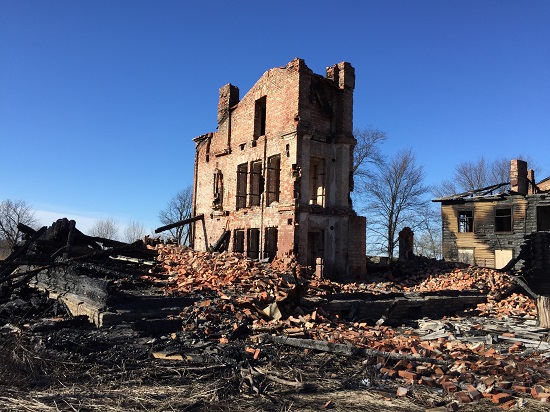
Lessons Learned At Tallinn Music Week by Tristan Bath
There’s a small peninsula jutting northwards out of the Estonian capital into Tallinn Bay like a narwhal’s tusk. The Kopli district was home to the largest Lutheran cemetery in the Baltics for several hundred years until occupying Soviet forces repurposed the area into a military and industrial base. Wooden barracks and workers’ homes were built along the shores overlooking the pristine blue waters of Tallinn Bay. However, the years have not been kind to the area since Estonia gained independence from the Soviets, following spontaneous musical gatherings of the Singing Revolution in the early 90s. Condemned in the Estonian subconscious as a neighbourhood riddled with poverty, the prophecy fulfilled itself. The buildings were abandoned, and Kopli became a hive of homelessness, public drunkenness, and violence – during our visit we’re told stories of tramps even resorting to drinking cheap perfume in desperate bids to get drunk quick.
The harsh cold of Baltic winter inevitably came, and the inevitable happened as makeshift fires were set-up inside the abandoned buildings by the drunk and the homeless. Most of the buildings were all but razed to the ground in ensuing fires, their wooden shells immolated, leaving behind only the red brick shells surrounding the staircase that once sat in the centre of the structures. It’s a beautifully sunny, but bitingly cold Saturday when we head to Kopli for a walking tour offered by Tallinn Music Week. As we walk past dismantled stacks of furniture and piles of rubbish next to the burnt out shells of these buildings, our guide explains how she moved to the area despite her family’s protestations. She assures us it’s being regenerated, and the English journalists in attendance all soon agree the combination of stunning sea view and good connections to the city’s public transport system should make the project an easy sell. Estonians don’t necessarily see it that way though. As we head to our first gig of the day in a nearby, freshly fixed up building being once again repurposed as an artist’s residence and venue, we spot several clearly very freshly emptied bottles of wine amid the wreckage – 2015 vintage.
Having started in 2009, Tallinn Music Week is one of the very many notable festivals increasingly prevalent in Europe’s long tale of emerging nations and cities. Like TMW, they’re often state sponsored and supported – and quite rightly so. These are vital debutante balls for these countries hoping to make a name for themselves in a globalising cultural landscape. While the EU’s powers that be are in a state of crisis concerning the rise of moronic xenophobic sentiment (which is now hoping to exclude human beings seeking refuge from war zones), the long tail of the union is still busy discovering their 21st century selves.
The musical programme of the festival is pretty gigantic, including 250 artists from 30 countries, and attracting some 35,000 fans plus 1,000 music industry bods in the process. The diverse range of music occurs in venues strewn across the city, ranging from the stony interiors of the Põrgulava Theatre complex inside several interconnected houses in the city’s medieval quarter, to the unfathomably gigantic space in the city’s Seaplane Hangar. Perhaps that’s the festival’s one major flaw – the scope of the programme and distances between venues make the weekend an endless slog from place to place. Although it’s admittedly pretty damn far from torture having to wander Tallinn’s utterly beautiful cobbled city centre.
Friday morning opens with a speech from the much beloved incumbent Estonian President Toomas Ilves, kicking straight off with a missive on the state of things, referring directly to the attacks on Brussels Airport and Paris’ Bataclan, where (in his words) “out there band” Eagles Of Death Metal were playing. Despite perhaps overstating how boundary pushing they actually are, his message is clear: culture and liberty are under attack on all sides. As he put it, “We all need to help, we all need to use our creativity… to make a change for the better.” Later the President performs a DJ set including tracks from his recent charity compilation Teenage Wasteland, which compile 16 songs from his upbringing in the United States between 1963 and 1978. While the post of President in Estonia holds no true executive power – that lies with the Prime Minister in the Estonian system – the symbolic importance of Ilves is massive, and one can’t help but love the man, especially after spinning Bowie’s ‘Panic In Detroit’, New York Dolls’ ‘Trash’, and The Velvets’ ‘Rock & Roll’. What would David Cameron spin? Yes, exactly. The Arctic fucking Monkeys, Foo Fighters, and the Stereophonics, that’s what.
The first night is strewn with highlights aplenty from various nations. Swedish trio Hey Elbow manage to light up their afternoon set on the oddly placed stage in the city’s largest book shop, expertly executing their mix of killer hooks and shoegazey atmospheres wonderfully shaded by the electronically processed trumpet of Ellen Pettersson. After a wander during nightfall, it’s the turn of obscure Liverpudlian outfit The Revolutionary Army Of The Infant Jesus. They released only a handful of albums back in the late 80s/early 90s in that C93/NWW industrial folk vein, but recently discovered them selling online for hundreds of pounds, leading the group to reform, reissue, and put out their first new music for twenty years. The reformed ensemble of half a dozen anonymous personnel fill the larger room in the guildhall for Tallinn’s Brotherhood Of The Blackheads (a “guild for unmarried merchants and shipowners” founded in the 14th century) with a slow moving improvisation of synths, softly spoken word, clarinet, (David) Tibetan bowls, harmonium, and stunning cello playing. It’s a swelling mess akin to Current 93’s contribution to Music For The Horse Hospital; it’s a folk ritual that feels utterly ancient, and precisely what this setting was built for.
Several Estonian acts go on to extrapolate folk in the belly of the guildhall, evoking similar feelings of timelessness, imprinted with a distinctly haunting Estonian spirit. All female trio Eeter (“Ether”) combine traditionally-tinted singing with a squidgy dark lattice of samples and instruments that’s rawly experimental. Fiddler and vocalist Maarja Nuut is perhaps the very finest, toying with vacant musical space, layering bowing and wordless vocal loops into unpredictably spiralling shapes, breaking current trends akin to Sarah Neufeld’s playing, and melodically drawing from a rich well of Estonian folk tunes.
The host of Estonian acts though, is as broad as the festival, going far beyond those very much expected folk music tropes. In a hall next to the main hub of Tallinn’s criss-crossing train network Estrada Orchestra play an intensely jazzy sort of funk on Saturday afternoon, very much in the vein of the UK’s recent Soundway-fuelled love affair with Afrobeat and its descendants, wielding flutes and saxophones alongside drum, bass, and keys. It’s by no means innately Estonian sounding, but it’s a hell of a lot closer to the work of Finland’s jazz/Afrobeat crossover pioneer Jimi Tenor than it is to basically anything else beyond On The Corner-era Miles Davis. The overall highlight of the Estonian music programme though, has to be the strangely powerful Tallinn-based duo Faun Racket. Producers Andres Lõo & Talis Paide stand behind a handful of keyboards, sequencers, and effects pedals, resultantly playing a melodic synthetic set of beats and tunes at times reminiscent of Depeche Mode (who notably have their very own themed bar in Tallinn) albeit with some of those slicker pop sensibility roughed up and some bass music influences thrown into the low end. Andres Lõo also sings, delivering incredible performances akin to Scott Walker’s latter day madness. They manage to suspend all disbelief, and not many singers could pull that off, gyrating and screaming as Lõo does. To boot the set moves semi improvised from song to song. They played back in 2014 too, and spoke to John Rogers in his Quietus review of that year, readable here.
Amidst the more diverse programme sit two showcases for (mostly) Estonian hip hop and metal, and neither deliver much worth writing home about. The musicians and crowds do have a joyous abandon lacking in some of the other sets – but much of it’s undeniably composed of rehashed photocopies of pre-existing musics. At the other end of the scale, one of the more original artists to play was Kara-Lis Coverdale, a Canadian-born musician/composer whose family emigrated from Estonia during the Soviet Invasion in the 1940s. He music’s a intensely beautiful assemblage of tones and MIDI notes, refracted through a digital hall of mirrors to create dreamy compositions that project organic sound worlds into impossible new synthetic shapes. Despite growing up in Canada, Coverdale’s innately linked to Estonian culture, and her music seems imbued with the magical scope, overlapping sounds, and Earthly beauty of the country’s strong choral tradition.
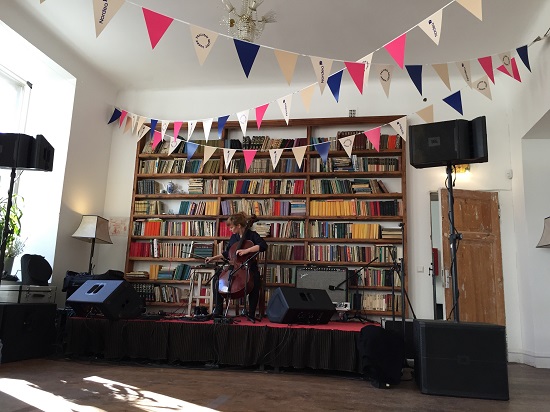
“I speak fluent Estonian because I went to Estonian School, attended Estonian summer camp, and have worked in several Estonian Churches as an organist. Musically, I grew up in the folk tradition of Estonian music, and have always sung in Estonian choirs and studied Estonian music. Although I have never lived there, it is my motherland, and my connection with the country is uniquely strong. The folk repertoire of Estonian language is so dense and expansive, that almost every activity, thing, feeling, or occasion has a correlative tune that continually serves as a sort of idea pool or starting point.”
Tallinn Music Week’s goal of nurturing Estonia’s music scene has been undoubtedly fulfilled for another year. The sheer volume of acts and variety of sounds on display is staggering for a city of its size, and the lion’s share of the Baltic acts manage to make themselves heard amid the din. As their turbulent recent history begins to fade into memory, that musical heritage must morph too. The very best Estonian artists at the festival do just that, utilising that pool Coverdale referred to – deploying the sheer intensity of Estonian musical traditions in new and unique ways.

